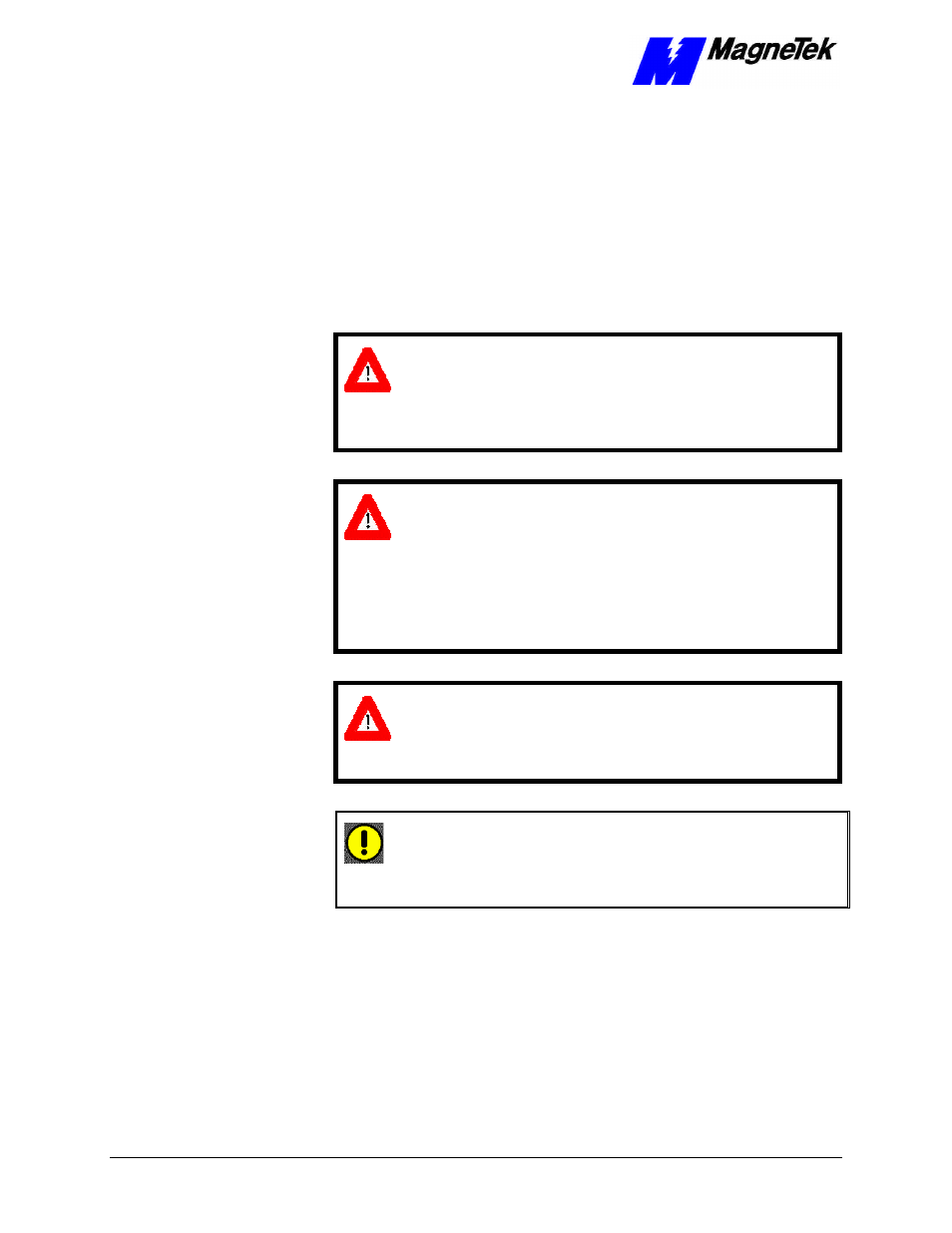Troubleshooting motor symptoms, Warning, Caution – Yaskawa SmartTrac AC1 User Manual
Page 58

SMART TRAC AC1
6-2
••
Troubleshooting Your Smart Trac AC1 Technical Manual TM 3554-000
Troubleshooting Motor Symptoms
Each Smart Trac AC1 is programmed for your specific application. Because all
faults are programmable, an Application Engineer has selected and programmed
certain faults to be displayed as they occur. Some (Standard) faults are displayed
by most typical systems. Reference tables in the appendices which list all faults
by type of fault.
Should your AC1 malfunction, diagnose the problem using the general
information in this chapter. Pay special attention to the following safety
precautions:
WARNING
WARNING
Always disconnect, lock out and tag "out of service" incoming
single-phase or three-phase power before test equipment is
connected or removed. Failure to comply with this warning may
result in personal injury or death.
WARNING
WARNING
Oscilloscope chassis may be at voltages potentially hazardous to life
if not properly grounded. Use only a dual channel, electrically
isolated oscilloscope (i.e., Tektronix 222P, THS 700) in the
differential mode, with X100 probes, to measure high voltage
waveforms. Always connect oscilloscope chassis to earth ground.
Failure to comply with this warning may result in personal injury or
death.
WARNING
WARNING
High Voltages may be present when equipment is open and
energized. Do not work alone. Failure to comply with this warning
may result in personal injury or death.
CAUTION
CAUTION
Never disconnect or connect the wiring while the power is applied.
Failure to comply with this warning may result in damage to
equipment..
1. Check the red CHARGE light. When illuminated, it indicates that the
DC bus is running. If not lit, check the circuit breaker and input power
circuitry.
2. Check for rated incoming power to the drive (110 VAC, 240 VAC, 480
VAC or 600 VAC, depending on unit) across terminals L1(R), L2(S),
L3(T). If not at rated voltage, check the circuit breaker and input power
circuitry.
3. Check for loose wiring or connections.
If the drive/motor will
not operate